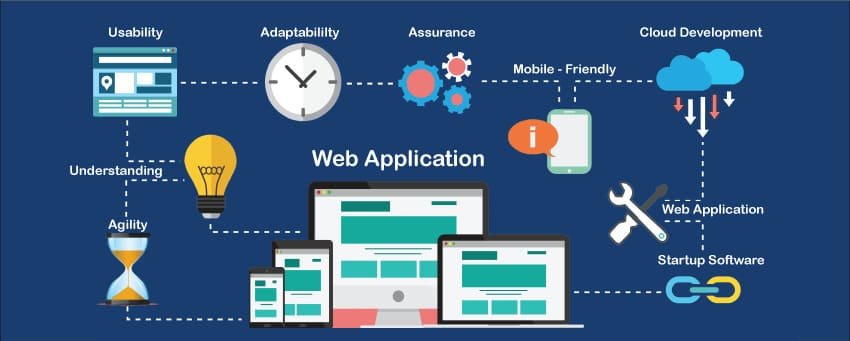The Impact of Progressive Web Apps
Revolutionizing User Experience
In the dynamic landscape of web development, Progressive Web Apps (PWAs) have emerged as a transformative force, redefining the way users interact with websites. With the goal of providing a seamless, app-like experience on the web, PWAs have gained widespread adoption across various industries. In this comprehensive exploration, we’ll delve into the concept of PWAs, their impact on user experience, and the advantages that make them a game-changer in the world of web development.


Understanding Progressive Web Apps (PWAs)
Progressive Web Apps are a type of web application that leverages modern web technologies to deliver an experience that closely resembles native mobile apps. They are designed to be reliable, fast, and engaging, with features that bridge the gap between traditional websites and native applications. The key principles that define PWAs include:
1. Progressive Enhancement
PWAs are built with a progressive enhancement approach, meaning they work for every user, regardless of their device or browser capabilities. Users with modern browsers benefit from enhanced features, while older browsers still provide a functional experience.
2. Connectivity Independence
One of the standout features of PWAs is their ability to function seamlessly in various network conditions. They can work offline or with a limited network connection, thanks to service workers that cache essential resources.
2. Responsive Design
PWAs are designed to be responsive, ensuring a consistent and user-friendly experience across various devices, including desktops, tablets, and smartphones.
4. App-Like Experience
PWAs offer an app-like experience with features such as smooth animations, gestures, and the ability to be added to the user’s home screen.
5. Secure and Served over HTTPS
PWAs require a secure connection to ensure data integrity and user security. They are served over HTTPS, providing a trustworthy environment for users.
The Impact on User Experience
1. Fast Loading Times
PWAs are known for their exceptional loading speeds. With service workers caching resources, users experience quick load times, even on slower network connections. This contributes significantly to a positive user experience, reducing bounce rates and keeping users engaged.
2. Reliable Performance
The reliability of PWAs, especially in offline or low-connectivity scenarios, is a game-changer. Users can access content and functionality even when disconnected, enhancing the overall reliability of the application.
3. Engaging User Interface
The app-like interface of PWAs, complete with smooth transitions and gestures, enhances user engagement. This is particularly crucial for mobile users who expect a fluid and responsive experience.
4. Push Notifications
PWAs support push notifications, allowing businesses to re-engage users with timely updates, promotions, or relevant information. This feature enhances user retention and keeps the application top of mind.
5. Cross-Platform Compatibility
PWAs are designed to work seamlessly across different platforms, eliminating the need for multiple codebases for different operating systems. This streamlines development efforts and ensures a consistent experience for all users.
Advantages of Progressive Web Apps
1. Cost-Efficient Development
The development of PWAs often requires less effort and resources compared to building separate native apps for different platforms. This cost efficiency makes PWAs an attractive option for businesses with budget constraints.
2. Improved Accessibility
PWAs are accessible through a URL, eliminating the need for users to download and install applications from app stores. This streamlined access improves user adoption and reduces friction in the onboarding process.
3. SEO-Friendly
PWAs benefit from being easily discoverable by search engines, contributing to better search engine optimization (SEO) rankings. This is a notable advantage over some native apps that may struggle with visibility.
4. Faster Updates
Since PWAs are served through the web, updates are instantaneous. Users always access the latest version without the need for manual updates or app store approvals.
5. Enhanced User Retention
The combination of fast loading times, offline capabilities, and push notifications contributes to improved user retention. Users are more likely to return to an application that provides a reliable and engaging experience.
Case Studies: Success Stories with PWAs
1. Twitter Lite
Twitter Lite, a PWA version of the social media platform, delivered a faster, more reliable experience for users with slower network connections. The PWA reduced data consumption and significantly improved page load times.
2. Flipkart
The Indian e-commerce giant, Flipkart, implemented a PWA to enhance the shopping experience for users. The PWA resulted in a 70% increase in conversions, demonstrating the impact of PWAs on business metrics.
3. Starbucks
Starbucks’ PWA provides users with a seamless experience for browsing the menu, customizing orders, and locating nearby stores. The PWA combines the convenience of a mobile app with the accessibility of a website.

Conclusion
Looking Ahead: The Future of PWAs
As technology continues to evolve, the influence of Progressive Web Apps is poised to grow. The emphasis on user experience, speed, and reliability aligns with the evolving expectations of digital consumers. The future may witness further integration of PWAs into various industries, including e-commerce, media, and beyond.
In conclusion, Progressive Web Apps have emerged as a revolutionary force in web development, elevating user experience to new heights. Their impact on loading times, reliability, and engagement makes them a compelling choice for businesses aiming to provide a top-notch digital experience. As the web continues to evolve, embracing PWAs may well be the key to staying ahead in the competitive landscape, delivering user-centric applications that combine the best of both web and mobile worlds.




